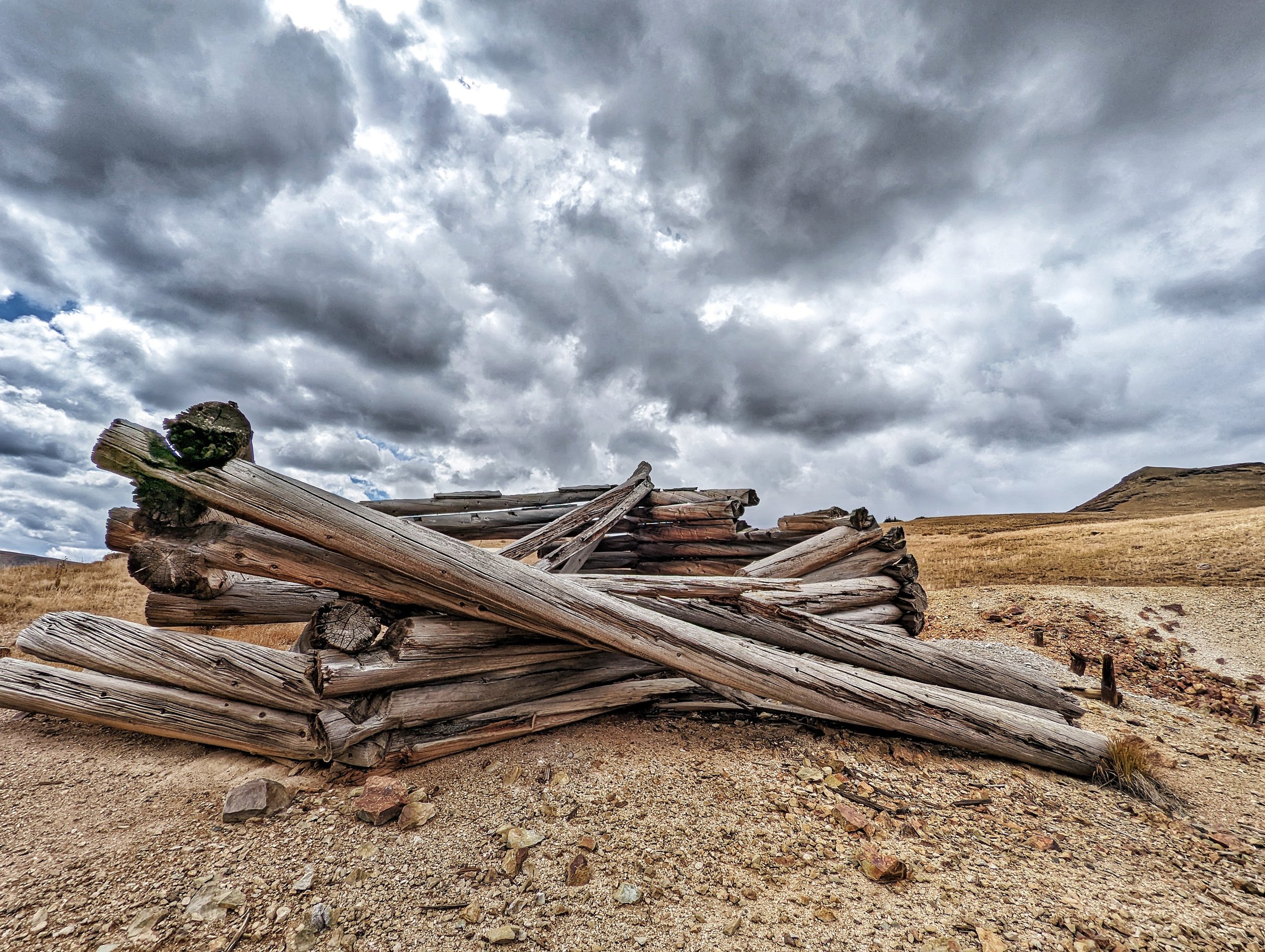Perry Eberhart in his wonderful 1969 book titled, ‘Colorado Ghost Town and Mining Camps’ described the town of Carson thus…
“The town sat directly on the Continental Divide, with water falling on one side
of town heading toward the Lake Fork of the Pacific Drainage and water on the other
side of town flowing into the Lost Trail Creek of the Rio Grande system, headed
toward the Atlantic Basin. With such a snowbound location, the town didn’t last long.”
Well, in the grand scheme of things as it pertains to Colorado’s past mining industry, Carson did last about 30 years, bucking the trend of “flash-in-the-pan” towns and against the odds of high altitude and weather. Carson lasted from 1881 to 1912.
John Cristopher Carson first discovered some promising float samples in 1876 in what is now called Wager Gulch. Resting on his promising discovery, Carson traveled to Leadville for about a year before returning to Wager Gulch in 1881 whereby, he laid out several claims on both sides of the Continental Divide (now Carson Pass- 12,420’). His most successful claim was the Bonanza King Mine. Wager Gulch by the way, was named after an overseer/manager, Wager, who was partly responsible for putting in a road from Lake City up the unnamed gulch that now bears his name. This didn’t happen until 1887. Travel to Carson before then, was undertaken by mule and by toboggan in the winter.
Since there was no reliable road or thoroughfare to Carson prior to 1887, mining and exploration as one would expect, was a slow undertaking. However, as word eventually got out about Carson’s claims, regardless of access and logistics, it nevertheless attracted the attention of other prospectors. From 1882-1883, no less than 154 claims with staked. While silver was the primary ore, other metals such as: copper, gold, zinc, iron and zinc were also mined. Some of the area’s more successful mines included the St. Jacob, the Bachelor, Kit Carson, Maid of Carson, Iron Mask and Chandler. In fact, the St. Jacob produced more than one million dollars (in 1880’s currency) in ore during its tenure. One year alone saw almost $190,000 in ore extracted from the St. Jacob. The Bachelor Mine was in a very close second in terms of wealth; so much so, that miners started to refer to Carson as Bachelor Cabins for the sheer number of miners working the mine.

The boarding house in Carson

Bones of Old Carson

Looking north towards Point 13838

Carson from high on the 4x4 road to Carson Pass. Alpenglow illuminating Coney Benchmark.
In late 1883, miners started to explore the north side of the pass more extensively, constructing more homes & cabins. Plus, with the easy access to water (beaver ponds) and extra shelter from a higher treeline, this new development quickly took hold. The original encampment on the south side of the pass and the existing structures at the apogee came to be known as Old Carson.
The halcyon days of Carson started around 1896 when major veins of gold were discovered. The town blossomed to 400-500 residents. Carson sported a hotel, mercantile, a smelter, post office (which closed in 1903), livery stable and a boarding house which also served as a makeshift hospital.
But even with the factors of having an exceptionally high altitude and severe winters, Carson hung on. However, even this little town couldn’t ford everything thrown at it. When Colonel Channing Frank Meek decided to pull up his stakes and sell his holdings to pursue yule marble mining in the small encampment of Marble in 1904, it signaled the end of Carson (C.F. Meek was one of Carson’s larger mine owners & operators). Residents slowly started to follow suit and leave town. By 1910, the last twelve people finally abandoned Carson (11,560’) leaving it to the elements.
The road leading to Carson from the Lake City side is notoriously rough and widely considered to be one of the tougher Jeep roads in the state. In fact, the local outdoors store in Lake City, The Sportsman won’t shuttle people to the top of the pass anymore (mostly CT hikers).
The townsite of Carson is a 305.7-acre area. The town has recently been listed for sale on Sotheby’s Real Estate website for an asking price of $925,000. Yearly taxes on this property are roughly $10,943 which seems rather high considering the remoteness and relative inaccessibility of the property. But Hinsdale County doesn’t have much of a tax base, so…
Carson was sold in 2023. So only time will tell what the new owner has in store for this marvelous and remarkably well-preserved historical site.
From the bottom of Hinsdale County #30 to the townsite of Carson (county road #36), about 3.8 miles, all three times I have been there, it took me just over an hour to drive that impossibly short distance. So consider that when making a visit.

References/Sources……
https://www.erenow.org/common/hiddenhistoryoldwesthauntsofushistory/13.php
https://www.fox29.com/news/colorado-ghost-town-for-sale-mining-buildings-lake-city.amp
https://www.legendsofamerica.com/carson-colorado/
https://www.jeeptheusa.com/carson-ghost-town-25.html

Inside the boarding house

Carson Townsite

Carson at dusk

Another view of the boarding house

Random building in Carson

Highpoint on the Colorado Trail just above Carson Pass

CT marker near Old Carson

Hiking the CT back to Carson Pass

Hiking up to Bent Peak above Carson Pass